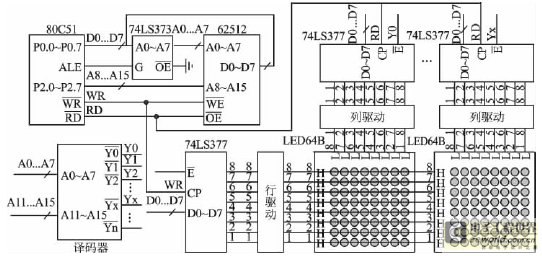
Simple LED blinking using PIC16F877A

This project involves a basic LED blinking circuit utilizing the PIC16F877A microcontroller. It features two LEDs connected to the PIC16F877A, with the source code adapted from the 16F template.
The circuit design consists of the PIC16F877A microcontroller, which serves as the central control unit for the LED blinking operation. The two LEDs are connected to specific GPIO (General Purpose Input/Output) pins of the microcontroller, allowing for individual control of each LED. A resistor is typically placed in series with each LED to limit the current and prevent damage to the LEDs.
The operation of the circuit is governed by a simple program written in assembly or C, which is uploaded to the microcontroller. The source code is derived from the existing 16F template, which provides a framework for initializing the microcontroller and configuring the GPIO pins. The code includes a loop that toggles the state of each LED at defined intervals, creating a blinking effect.
For power supply, the circuit can be powered using a standard voltage source compatible with the PIC16F877A, usually 5V. Proper decoupling capacitors should be placed near the power pins of the microcontroller to ensure stable operation.
This simple LED blinking project serves as an introductory exercise in embedded programming and microcontroller interfacing, demonstrating fundamental concepts such as GPIO control, timing, and basic circuit design. The versatility of the PIC16F877A allows for further expansion of the project, such as adding more LEDs, incorporating sensors, or implementing user input mechanisms for enhanced functionality.This is a simple LED blinking project using PIC16F877A. Basically there are only 2 LEDs, connected to PIC16F877A and the source code is being modified from the 16F template.. 🔗 External reference
The circuit design consists of the PIC16F877A microcontroller, which serves as the central control unit for the LED blinking operation. The two LEDs are connected to specific GPIO (General Purpose Input/Output) pins of the microcontroller, allowing for individual control of each LED. A resistor is typically placed in series with each LED to limit the current and prevent damage to the LEDs.
The operation of the circuit is governed by a simple program written in assembly or C, which is uploaded to the microcontroller. The source code is derived from the existing 16F template, which provides a framework for initializing the microcontroller and configuring the GPIO pins. The code includes a loop that toggles the state of each LED at defined intervals, creating a blinking effect.
For power supply, the circuit can be powered using a standard voltage source compatible with the PIC16F877A, usually 5V. Proper decoupling capacitors should be placed near the power pins of the microcontroller to ensure stable operation.
This simple LED blinking project serves as an introductory exercise in embedded programming and microcontroller interfacing, demonstrating fundamental concepts such as GPIO control, timing, and basic circuit design. The versatility of the PIC16F877A allows for further expansion of the project, such as adding more LEDs, incorporating sensors, or implementing user input mechanisms for enhanced functionality.This is a simple LED blinking project using PIC16F877A. Basically there are only 2 LEDs, connected to PIC16F877A and the source code is being modified from the 16F template.. 🔗 External reference





